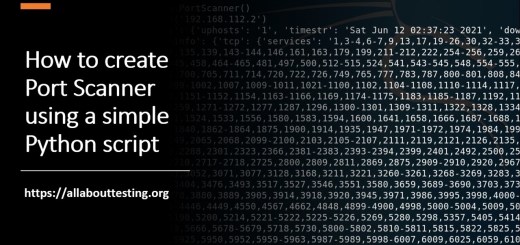Computer Networking: Basic Tutorial

This blog covers some of the basic computer networking terms and concepts.
Computer Network: It is a collection of network devices such as routers, firewalls, desktops, different servers, etc. It is further classified as an open and closed network. In simple terms, it is a network consisting of two or more computers connected, either by cables (wires) or wifi (wireless).

Open Network: Other networks can be connected to the open network.
Closed Network: It is also called an isolated network. Other networks can be connected to the open network.
Network Devices: It helps desktops to connect with other machines. Router, Switch, Hub, and Bridge are the most common network devices which are used to interconnect networks.
Router: Connect two or more different networks with each other.

Switch: It helps to connect different desktops and other network devices in the same network.

OSI model: OSI stands for Open Systems Interconnections. It helps network professionals and researchers in understanding data flow and protocols used for data transfer from source to destination.

hostname: It is defined as user-given nicknames the desktops and other devices for easy identification of assets. In windows, you can find the hostname by launching Command Prompt and typing the command "hostname".

IP Address: You can understand this term by taking an example of the address of your house. Just like your house address is used to locate your house. Similarly, an IP address is used to locate the network among many networks. Further, IP addresses are classified as private and public IP addresses. You can find a private IP address by just typing "ipconfig" in Command Prompt (Windows). Your public IP address can be identified by typing "my IP" in the google search.

Ports: Applications (installed in one host) exchange data with other applications (installed in another host). The host may have more than one application that sends/receive data. Any application can be uniquely identified by using a combination of host IP and port number.
Command "netstat -a" can be used to get details of an application—a uniquely identified combination of host IP and port number termed as Socket.

DNS: It stands for Domain Name System. It converts the domain name or web URL into the corresponding IP address. Command "nslookup www.google.com" identified the IP address of servers of Google.

Address Resolution Protocol (ARP): It converts the IP address to its corresponding MAC or physical address.
Reverse Address Resolution Protocol (RARP): It converts MAC or physical address to its corresponding IP address.
Subscribe us to receive more such articles updates in your email.
If you have any questions, feel free to ask in the comments section below. Nothing gives me greater joy than helping my readers!
Disclaimer: This tutorial is for educational purpose only. Individual is solely responsible for any illegal act.








